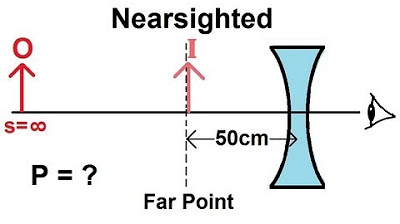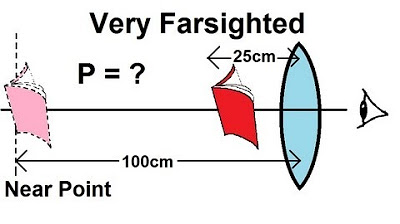How to select the Best Lens Implant for Premium Lens Replacement or Cataract surgery in 2023.
TLDRThis informative video discusses various premium lens implant options for individuals in their mid-40s and older, aiming to reduce reliance on glasses or correct significant cataracts. It outlines the differences between basic, stigmatism-correcting, and premium lens implants, and introduces five types of premium lenses used in 2023, each with its benefits and potential side effects. The video emphasizes the importance of choosing the right lens implant to optimize vision and minimize reliance on glasses, while acknowledging that no implant is perfect.
Takeaways
- 👓 Lens implants are chosen by individuals in mid-40s or older to reduce reliance on reading or bifocal glasses due to presbyopia or by those 65+ with significant cataracts for vision correction.
- 👨⚕️ There are two main groups of patients receiving lens implants: younger demographic (45-65) seeking premium lens replacement and older demographic (65+) undergoing cataract surgery.
- 🏥 Premium lens replacement and basic cataract surgery are similar procedures, with outcomes differing based on the surgeon and the chosen lens implant.
- 👁️🗨️ Basic lens implants are covered by medical insurance and are cost-effective, but require glasses for clear vision at all distances.
- 🌟 Premium lens implants aim to minimize or eliminate the need for glasses, but are not covered by insurance and require out-of-pocket expenses.
- 🔍 The choice of lens implant affects one's vision for the rest of their life, so it's crucial to make an informed decision.
- 💡 There are five different premium lens implants available in 2023, each with its own strengths and weaknesses.
- 🌙 PanOptics lens is commonly used for full range vision without glasses, but may cause halos around lights at night.
- 🔄 Light adjustable lenses offer customizable vision with minimal halo effect but require multiple follow-up visits for adjustments.
- 🎯 Symphony and IC8 lenses are suited for patients with prior radial keratotomy or irregular corneas, providing improved vision with some limitations.
- 💰 The out-of-pocket fees for each lens implant package are listed on the practice's website, covering various costs for a year after surgery.
Q & A
What are the two main groups of patients who receive lens implants?
-The two main groups are younger demographic (age 45 to 65) who want to reduce reliance on glasses, bifocals, or reading glasses due to presbyopia, and an older demographic (age 65 and above) who have developed visually significant cataracts.
What is the term used for the age-related process that affects vision in the 45 to 65 age group?
-Presbyopia is the term used for the age-related process that affects vision in this age group, leading to a need for reading glasses or bifocals.
What is the difference between basic cataract surgery and premium cataract surgery?
-The difference between basic cataract surgery and premium cataract surgery lies in the visual outcome, which depends on the surgeon and the type of lens implant selected.
What are the three types of lens implants mentioned in the script, and how do they differ in terms of vision correction and reliance on glasses?
-The three types are basic lens implants, which require glasses for clear vision at all distances; stigmatism correcting lens implants, which allow clear vision far away without glasses; and premium lens implants, which enable clear vision at all distances with minimal to no use of glasses.
What is the most common premium lens implant used for patients who want to see well at all distances without glasses?
-The most common premium lens implant used for such patients is the PanOptix lens.
What is the potential side effect of the PanOptix lens that patients may experience at night?
-Patients with the PanOptix lens may see a halo around lights at night, such as oncoming car lights or street lights.
If a patient has the PanOptix lens in one eye and wants to avoid the halo effect in the second eye, what lens could be used as an alternative?
-The VividY lens could be used as an alternative in the second eye, as it delivers clear vision far and mid but requires glasses to see near and has less of a halo effect at night.
How does the Light Adjustable Lens differ from other premium lenses in terms of post-surgery care?
-The Light Adjustable Lens requires more follow-up visits for adjustments and customization of the focus to improve vision at different distances. Patients must also wear UV-blocking glasses outdoors for the first two months after surgery.
What is the term for the lens implant strategy where one eye is set for distance and mid-range vision, and the other for mid-range and near vision?
-This strategy is called Blended Vision, which is typically better tolerated than monovision and works well for patients who have had success with monovision contact lenses.
Which lens implant is recommended for patients who have had radial keratotomy (RK) or have irregular corneas?
-The Symphony lens is recommended for patients with a history of radial keratotomy or irregular corneas, as it has shown great success in these cases.
What is the IC-8 lens, and which type of patients is it best suited for?
-The IC-8 lens provides an extended depth of focus via a small aperture within the lens implant design. It is best suited for patients with irregular corneas, such as those with keratoconus, corneal scarring, or irregular corneas after prior corneal surgery.
Outlines
👓 Understanding Lens Implants for Vision Correction
This paragraph discusses the need for lens implants among individuals in their mid-40s and older, as well as those with visually significant cataracts. It outlines two primary patient demographics: younger individuals seeking to reduce reliance on glasses and older individuals dealing with cataracts. The paragraph emphasizes the importance of choosing the right lens implant to correct vision and mentions the role of the surgeon and the type of lens in determining the visual outcome. It sets the stage for discussing various lens implant options and their impact on vision for the rest of the patient's life.
🌟 Premium Lens Implants: Types and Considerations
This section delves into the specifics of premium lens implants, explaining that they allow individuals to see well at all distances with minimal reliance on glasses. It contrasts premium lenses with basic and astigmatism-correcting lenses, highlighting the additional costs and the lack of medical insurance coverage for premium options. The paragraph outlines the five different premium lens implants used in the practice as of 2023, noting that while no lens implant is perfect, they are beneficial due to the natural lens's decline with age. It also introduces the panoptics lens as the most commonly used premium lens, detailing its benefits and potential side effects.
🌙 Night Vision and Lens Implant Selection
This paragraph addresses the concern of night vision and halo effects associated with certain lens implants. It presents the vividy lens as an alternative for patients who want clear distance vision but wish to minimize night halo effects. The paragraph also discusses the strategy of using different lenses in each eye to complement their strengths and weaknesses, allowing for better overall vision. It then introduces the light adjustable lens, which offers a full range of focus with minimal night halo but requires more follow-up visits and a specific post-surgery regimen, including wearing UV-blocking glasses and undergoing adjustments with a light delivery device.
🔄 Dealing with Irregular Corneas and Prior Surgery
This section focuses on patients who have had radial keratotomy (RK) and now require premium lens replacement due to cataracts or a desire to reduce reliance on glasses. The symphony lens is recommended for these patients, offering good distance and mid-range vision while acknowledging the need for reading glasses and potential night halos. The paragraph also introduces the ic8 lens, designed for patients with irregular corneas, and shares positive experiences with its use. The paragraph concludes by directing viewers to the practice's website for a summary of lens implants and associated fees, and reassures potential patients of the comprehensive eye exam and diagnostic tests they will receive to determine the best lens implant for their unique needs.
Mindmap
Keywords
💡Lens Implant
💡Cataracts
💡Presbyopia
💡Premium Lens Replacement
💡Astigmatism
💡Monovision
💡Radial Keratotomy (RK)
💡Light Adjustable Lens
💡VividY Lens
💡Symphony Lens
💡IC8 Lens
Highlights
Two groups of patients receive lens implants: younger demographic (45-65) wanting to reduce reliance on glasses and older demographic (65+) with visually significant cataracts.
Premium lens replacement is the term used for correcting vision in the 45 to 65 age group, while cataract surgery is used for those 65 and older.
Basic lens implants are covered by medical insurance and require the lowest out-of-pocket expense but require glasses for clear vision at all distances.
Stigmatism correcting lens implants help see well without glasses far away but are not covered by insurance and require additional out-of-pocket fees.
Premium lens implants offer the best vision correction with minimal reliance on glasses but are not covered by insurance and require the highest out-of-pocket costs.
The panoptics lens is the most commonly used premium lens, offering a full range of focus and typically allowing clear vision at all distances without glasses.
Patients with the panoptics lens may experience halos around lights at night, but have a 99% overall satisfaction rate.
For patients not wanting halo effects in the second eye, the vividy lens is an excellent option, providing clear far and mid vision with minimal halo effects.
The light adjustable lens offers full range of focus with minimal night halo and requires multiple follow-up visits for adjustments.
The light adjustable lens uses a special UV blocking glasses during the initial two months post-surgery to set the lens correctly.
Blended vision, a concept where one eye is set for far and mid, the other for mid and near, is better tolerated than monovision and is used with the light adjustable lens.
Patients with a history of radial keratotomy (RK) often have the symphony lens recommended, which provides great far and mid vision without glasses.
The ic8 lens is designed for patients with irregular corneas and provides an extended depth of focus.
A comprehensive eye exam and diagnostic tests are performed to determine the best lens implant for each patient's unique eye condition and visual expectations.
The video aims to inform patients about their lens implant options and guide them in making an informed decision about their vision correction.
The practice specializes in cataract and premium lens replacement surgery and invites patients to improve their vision through their expertise.
Transcripts
Browse More Related Video
5.0 / 5 (0 votes)
Thanks for rating:





